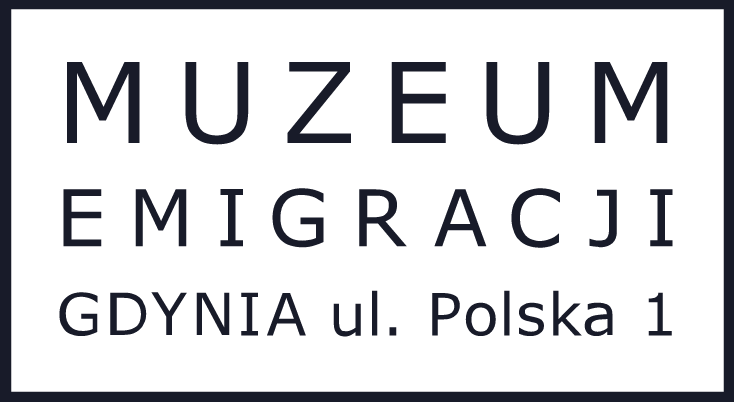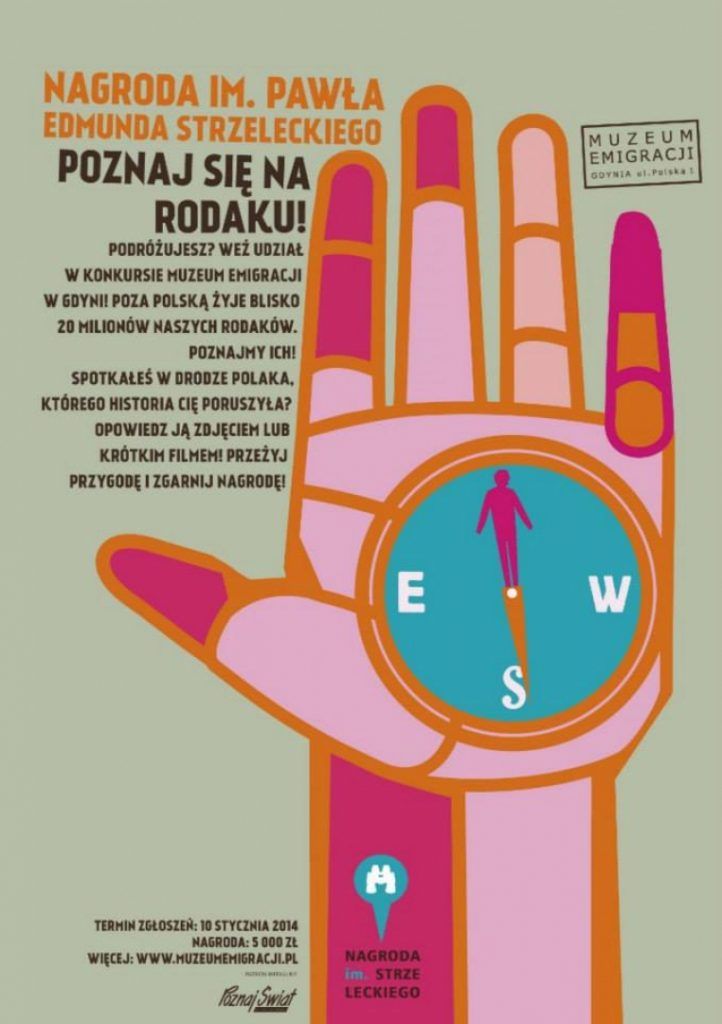What would it be like if a Pole from Warsaw met a compatriot from Argentina, South Africa, or China?Travel may well expose us to exoticisms, but can it open us up to our Polishness?With its Paweł Edmund Strzelecki Award, the Emigration Museum in Gdynia invites you to experience such an adventure.Under the slogan „Get to know your fellow countryman!” we will collect photography and film reports about extraordinary people met 'on the road’. Works should be submitted by January 10, 2014 and will be assessed by Marek Kamiński – traveler, polar explorer, conqueror of the North and South Poles; Chris Niedenthal – one of the most highly-acclaimed European press photographers; Tomek Michniewicz – journalist, backpacker, photographer, author of the bestseller book „Samsara — On Nonexistent Roads”; and Karolina Grabowicz-Matyjas — Director of the Emigration Museum in Gdynia.The author of the best report will be awarded a prize of 5000 PLN. The competition will be concluded during the most important event for travelers in Poland – National Meeting of Travelers, Sailors, and Alpinists KOLOSY in Gdynia.
Nearly 20 million people of Polish descent live in the world today, so it is not uncommon to meet a fellow countryman during our voyages abroad.They live on all continents, probably in every possible country on Earth.Not only in the United States, where Polonia is the largest (reaching 10 million people) or Germany, but also in Brazil, South Africa, Australia. Among them we can meet distinguished professors, eccentric artists, competitive businessmen, mad lovers of various hobbies, and sometimes quiet, inconspicuous people able to widen the horizons of their interlocutors.
The Emigration Museum in Gdynia encourages experienced globetrotters, as well as novice tourists to open up during their travels to their compatriots abroad. If you happen to meet a person that fascinates you, who inspires others, challenges tradition, breaks through stereotypes, and maybe even changes you – make sure to share it!Make a short report with a couple of photographs or a film.Don’t forget to include a brief text depicting the subject of your story.The jury will be seeking original, important, and moving tales.You can even use your mobile phone as a means of documentation – it is the people you’re talking about who are most important.Try to convey their story and show them in their natural environment.Some meetings cannot be planned, but if you’re about to embark on a journey, take a look at the Regulations of the competition.
The patron of the award is Paweł Edmund Strzelecki.The first Pole to travel around the world alone, he was a prominent geographer, whose expeditions continue to impress, to this day, due to their reach and ambition. His greatest discoveries were made in Australia – he described new lands and mountain ranges, identified deposits of coal, oil, and gold. In fact, he gave the current name to the highest summit on the continent, Mount Kosciuszko, after Polish national and American Revolutionary War hero Tadesz Kościuszko.History cites many other examples of Polish emigrants making breakthrough discoveries, setting new records, initiating economic growth, and shaping political landscape in various parts of the world. With the Strzelecki Award, the Emigration Museum in Gdynia wishes to make a statement about the world today, about the modern Polonia, and about its heroes who make the world a better and more interesting place.
This year marks the first edition of the award.However, it will be included in future editions of the National Meeting of Travelers, Sailors, and Alpinists KOLOSY.It opens up the possibility that, in a year or two, this initiative will bring a new way of perceiving Poles and Poland.
Besides the Director of the Emigration Museum in Gdynia, the jury board includes:
Marek Kamiński – member of The Explorers Club in New York; the only man in the world to conquer both poles of the Earth within one year.During his preparation for this achievement, he traversed Spitsbergen (400 km) and the glaciers of Greenland (600 km).From 1985 to 1987, he participated in the expedition through jungles on the border of Guatemala and Mexico and, at the end of 1997, he unsuccessfully attempted to traverse 1450 km of Antarctic alone.A year later he conquered the highest summit of the continent – Mt. Vinson.In 1999, he traveled across the Atlantic Ocean onboard yacht „Gemini” and walked 700 km through the Gibson Desert in Australia.Just one year later, onboard yacht „Warta – Polypharma”, he traveled across the Atlantic Ocean again and participated in the Puro Greenland Expedition to the source of the Amazon River.During his last expedition, he was accompanied by a disabled boy – Jasio Mela.Due to an electric shock, the boy had suffered an amputation of a part of his right arm and a part of his left shin.Thanks to Marek Kamiński, he became the first disabled teenager to conquer both poles of the Earth.He achieved this within one year.His book, „My Poles – Expedition Diaries 1990-1998”, won the Artus Award for the book of the year in 1998 and was awarded the Arkady Fiedler „Amber Butterfly”.In 2009, he organized and conducted the Summer Vistula Expedition and, in 2010, its winter equivalent.
Chris Niedenthal – was born 1950, into a Polish family in London.After concluding his studies in the London College of Printing, he decided to come to Poland for a couple of months in 1973 and made his home here ever since.At the beginning of the ’80s, he worked for the American weekly NEWSWEEK and, from 1985, for the TIME.For the latter, he contributed many reports from all over Eastern and Cental Europe, the Soviet Union, and the Balkans.In 1980, he witnessed the birth of the free labor union „Solidarność” during a strike in the Lenin Shipyard in Gdańsk, as well as the introduction of martial law in Poland in December of 1981.Later, he documented the downfall of Communism in 1989.In 1986, he won the World Press Photo Award for his portrait of the Hungarian leader Janos Kadar.For a couple of years, he also worked for the German weekly DER SPIEGEL.Two albums featuring his photographs were published in Poland: „People’s Republic of Poland. The requisites” (BOSZ, 2004), and „13/12. Poland during Martial Law” (Edipresse, 2006).During the last ten years he has developed numerous projects, including a series of photographs of mentally handicapped children, which he presented in exhibitions in many cities in Poland and abroad (such as „Taboo. Portraits of the not portrayed”, „Letters to Son”, among others).
Tomek Michniewicz – journalist, backpacker, photographer, radioman, and activist. Author of two bestseller reports: „Samsara — On Nonexistent Roads”, and „Fever — In the World of Treasure Hunters”.Chief editor of the traveler portal KoniecSwiata.net. Known for his work with Polish Radio Programs 1 and 3, and formerly a journalist for Polityka, and Polish Radio Bis, among others.Laureate of four awards from the Mediatravel festival of civilization and media art. Nominee for awards by National Geographic and Traveler.


